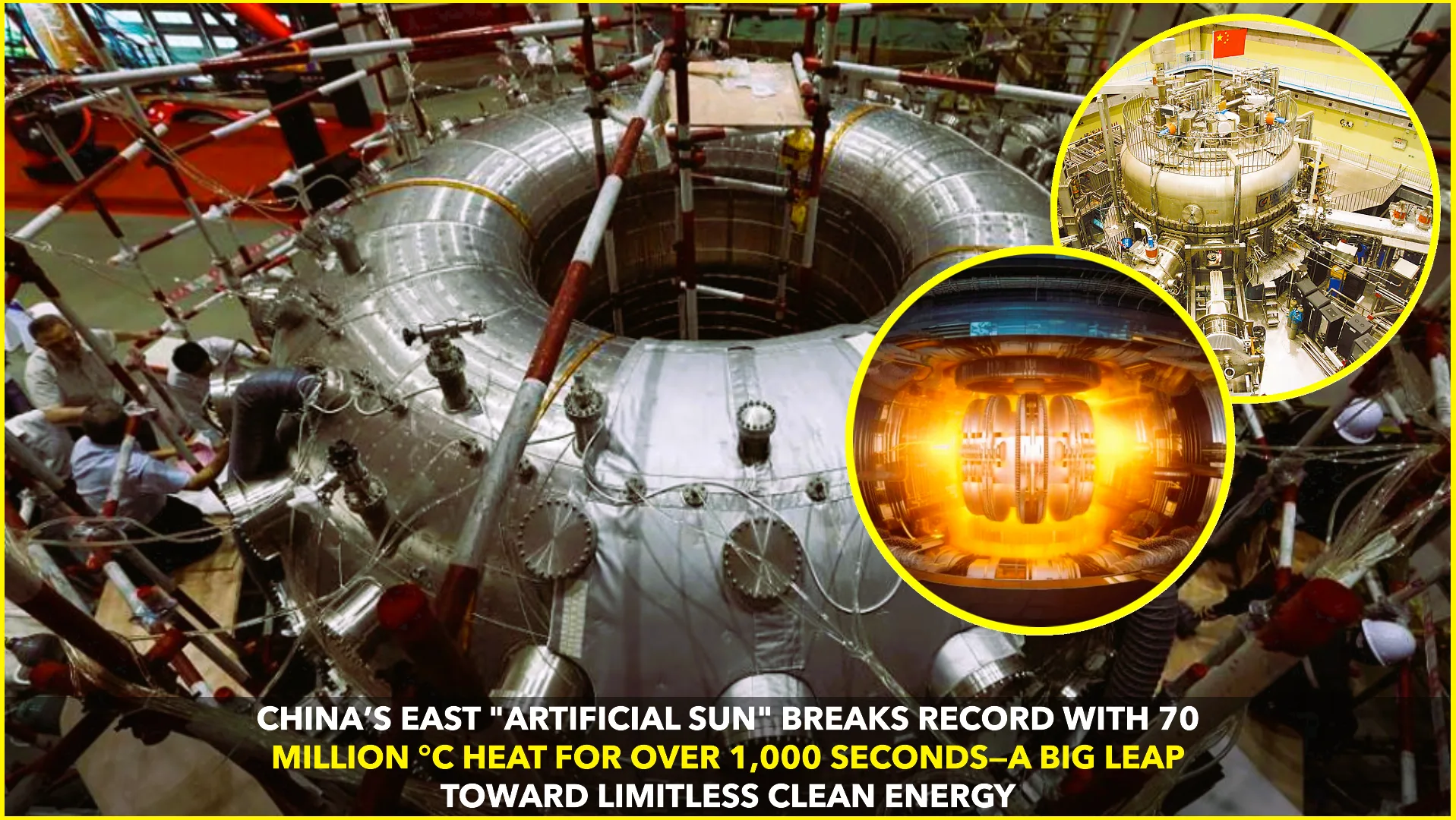China’s Experimental Advanced Superconducting Tokamak (EAST), nicknamed the “artificial sun,” made global headlines in 2021 by sustaining plasma at an unprecedented 70 million degrees Celsius for 1,056 seconds—about five times hotter than the core of the Sun. This milestone marked a crucial step forward in the quest for clean, limitless energy through nuclear fusion.
The EAST reactor, located in Hefei, Anhui province, is part of China’s larger strategy to develop fusion energy, which mimics the natural processes powering stars. Unlike nuclear fission, which splits atoms and produces long-lived radioactive waste and greenhouse gases, nuclear fusion fuses hydrogen atoms into helium, releasing vast amounts of energy with minimal environmental impact.
A World Record in Plasma Physics
The breakthrough was announced by the Institute of Plasma Physics under the Chinese Academy of Sciences. The EAST experiment maintained high-temperature plasma—an ionized gas needed for fusion reactions—for 1,056 seconds, surpassing previous records. The reactor had previously hit temperatures of 160 million °C for 20 seconds, but this extended duration was key.
“This is a remarkable achievement,” said Professor Song Yuntao, director of the EAST experiment, in a report cited by the South China Morning Post. “It moves us closer to a stable fusion reaction and proves that sustained nuclear fusion is possible.”
Fusion: The Energy of the Future?
Fusion energy has long been regarded as the “holy grail” of power generation. It promises nearly unlimited fuel (from seawater), no carbon emissions, and no risk of meltdown. But so far, maintaining the extreme conditions needed—ultra-high temperatures and pressure—has proven technically challenging and extremely expensive.
China’s EAST is one of several tokamak reactors being tested around the world, including ITER in France (an international collaboration) and the SPARC reactor being developed in the U.S. by MIT and Commonwealth Fusion Systems.
While commercial fusion remains a long-term goal—experts estimate it may still be 20–30 years away—the success of the EAST experiment fuels optimism.
Global Race for Fusion Supremacy
China has invested billions into fusion research, aiming to be a leader in clean energy technologies. EAST is not a power plant in itself but a test bed for future reactors like the China Fusion Engineering Test Reactor (CFETR), which is expected to be built in the 2030s.
Other countries are also racing ahead. The ITER reactor, supported by 35 nations, is expected to start its first plasma test in 2025. Once fully operational, it aims to produce ten times more energy than it consumes—something no fusion reactor has done yet.
Is Fusion the Key to Ending the Fossil Fuel Era?
As the world struggles with climate change, energy insecurity, and the volatility of oil markets, fusion energy offers a vision of stability. With no harmful emissions and abundant fuel, fusion could transform the global energy landscape.
“Fusion is the ultimate solution to our energy problems,” said Li Miao, director of the physics department at the Southern University of Science and Technology in Shenzhen. “This milestone is a big step forward.”
However, challenges remain—not just in physics but also in economics and engineering. Yet with growing investments, international collaboration, and scientific breakthroughs like China’s EAST, the dream of harnessing star power on Earth seems closer than ever.
Sources:










